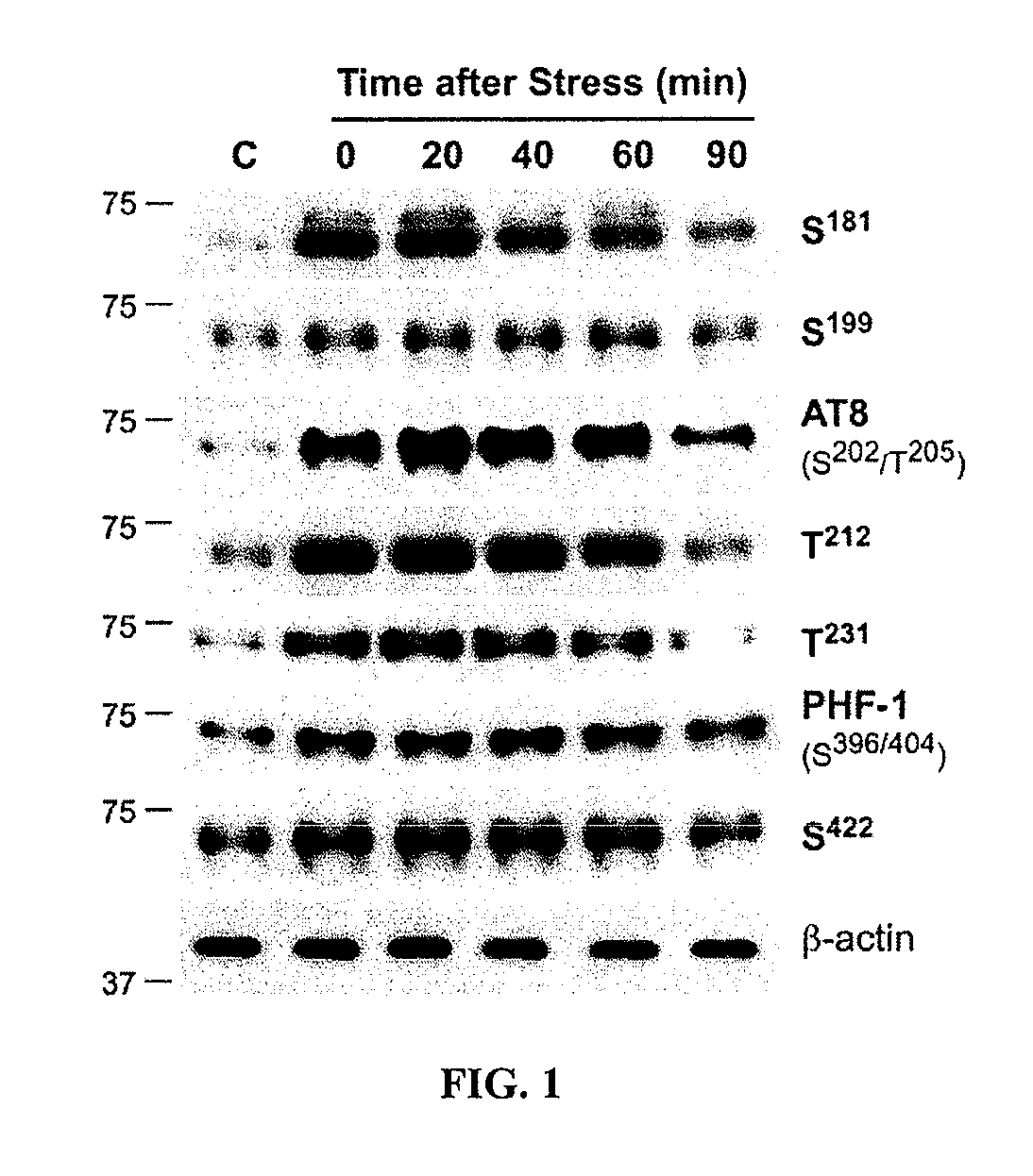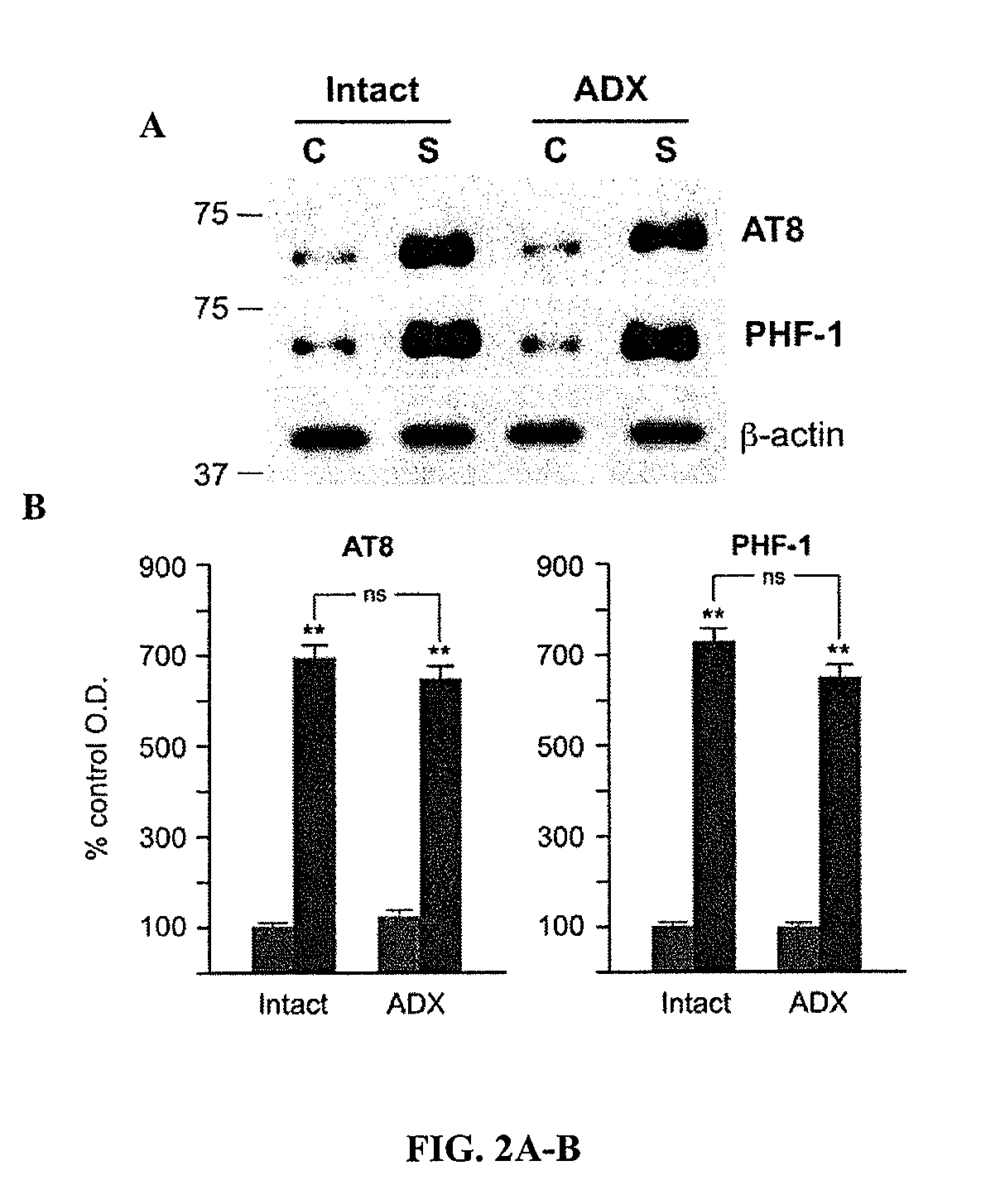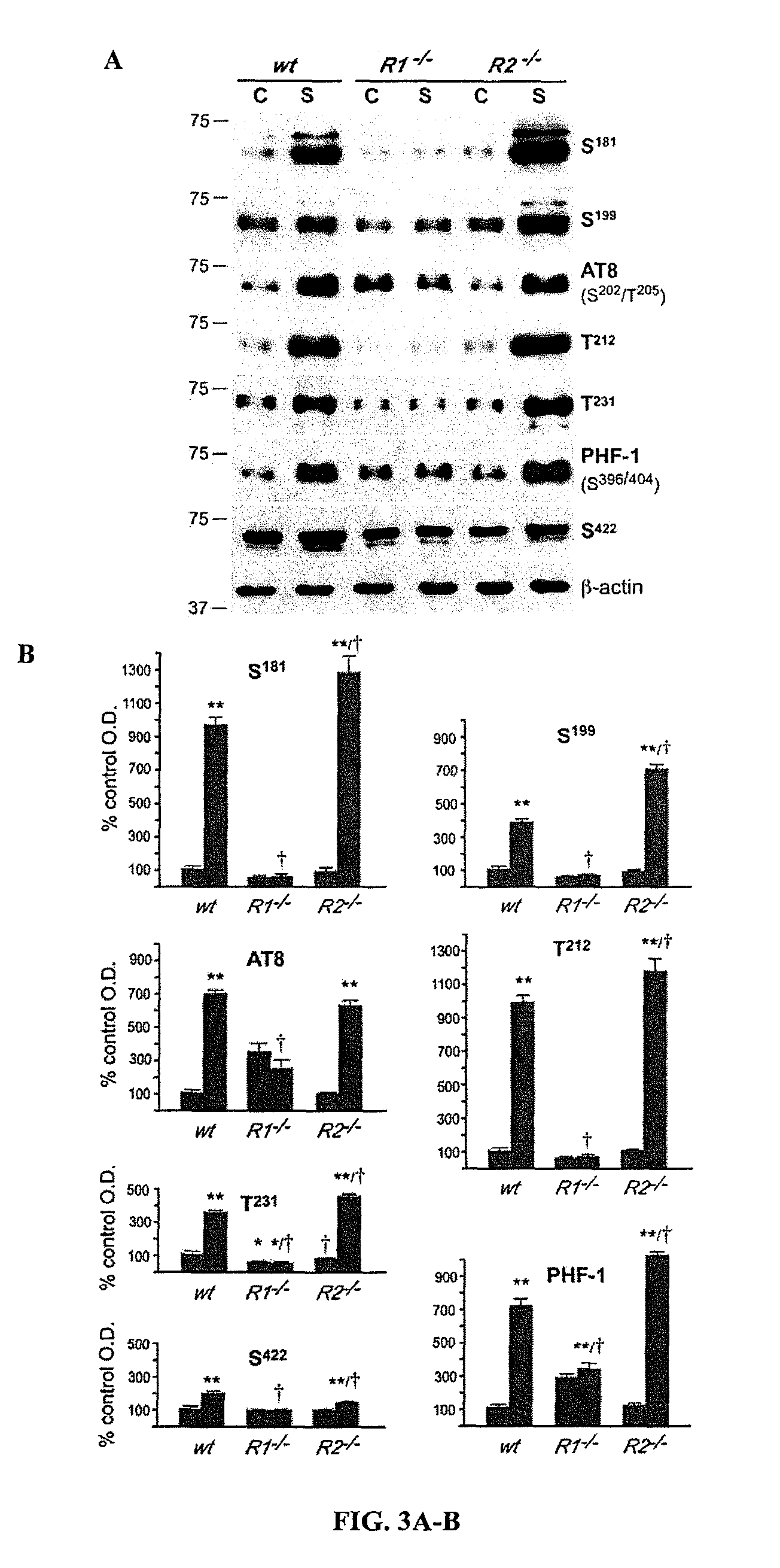Methods for treatment and prevention of tauopathies and amyloid beta amyloidosis by modulating CRF receptor signaling
- Summary
- Abstract
- Description
- Claims
- Application Information
AI Technical Summary
Benefits of technology
Problems solved by technology
Method used
Image
Examples
example 1
[0100]CRF-R Knockout Mice
[0101]Mutant mice and littermate wild type (wt) controls were bred from heterozygote breeder pairs of established lines derived from backcrosses of founder mice to achieve a pure C57BL / 6 background (Smith et al., 1998; Bale et al., 2000). Genotyping was performed by PCR analysis of tail DNA, and appropriate males were used for experimentation at 15-22 weeks of age. Pregnant females bearing fetuses carrying a mutant CRF-R1 allele received drinking water with 10 μg / ml corticosterone from days E12-P14 to prevent early mortality due to pulmonary dysplasia (Smith et al., 1998). Because CRF-R1− / − mice exhibit adrenal cortical agenesis, experimental animals were reinstated on corticosterone supplementation for 21 days prior to testing to allow the normal nocturnal bias in appetitive behavior to approximate the circadian fluctuation in circulating hormone levels. Blood samples were collected at the time of sacrifice and plasma corticosterone leve...
example 2
Tau Protein Phosphorylation after Acute Restraint Stress
[0130]To determine whether increased tau phosphorylation (tau-P) was observable in response to acute restraint, an acknowledged “emotional” stressor (Sawchenko et al., 2000). Western blot analysis was used to examine tau phosphorylation at several AD-relevant N- and C-terminal sites (S181, S199, S202 / T205 (AT8), T212, T231, S396 / 404 (PHF-1), and S422) in hippocampal extracts from C57BL / 6 mice sacrificed at various intervals after a single 30-min episode of restraint stress. Relative to basal (non-stressed) values, all sites exhibited significant increases in phosphorylation that were apparent at the termination of stress (0 min), with peak elevations (2-10 fold) achieved 20-40 min later and sustained through 60 min (FIG. 1). By 90 min, levels were reduced to or near those of unstressed controls. These results demonstrate that a representative emotional stressor induces rapid and reversible increases in tau-P at multiple AD-rele...
example 3
Glucocorticoid Involvement in Stress-Induced Tau Phosphorylation
[0131]Because of the dominant role of glucocorticoids in mediating stress effects on the CNS and their implication in AD neuronal damage (Sapolsky et al., 1985, 1986) and in mouse models of AD (Green et al., 2006), studies were undertaken to determine whether stress-induced tau-P was dependent on stress-induced glucocorticoid secretion. Although a prior study employed immunoassay and found no effect of adrenalectomy (ADX) on PHF-1 reactivity after acute cold water stress (Korneyev et al., 1995), phosphatase inhibitors were not utilized and only soluble fractions of tau proteins were examined. Studies described here examined stress-induced tau-P responses at the AT8 and PHF-1 sites in extracts of hippocampus from ADX and control mice exposed to acute restraint stress (FIG. 2A-B). ADX animals received replacement corticosterone in drinking water (10 μg / ml) to approximate basal hormone titers and their diurnal variation. R...
PUM
| Property | Measurement | Unit |
|---|---|---|
| post-stress time | aaaaa | aaaaa |
| diameter | aaaaa | aaaaa |
| temperature | aaaaa | aaaaa |
Abstract
Description
Claims
Application Information
 Login to View More
Login to View More - R&D
- Intellectual Property
- Life Sciences
- Materials
- Tech Scout
- Unparalleled Data Quality
- Higher Quality Content
- 60% Fewer Hallucinations
Browse by: Latest US Patents, China's latest patents, Technical Efficacy Thesaurus, Application Domain, Technology Topic, Popular Technical Reports.
© 2025 PatSnap. All rights reserved.Legal|Privacy policy|Modern Slavery Act Transparency Statement|Sitemap|About US| Contact US: help@patsnap.com



